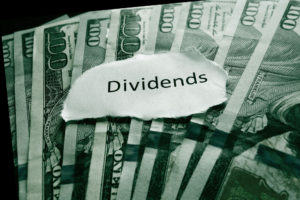

An open-ended scheme, whereby funds have no restrictions on the number of shares issued and capital is allocated in a diversified way leads to mitigate the loss. ELSS funds are considered to be a good option to invest as money is diversified and it is also one of the “best tax savers”. ELSS is popularly captivating it’s a share in the current market, in terms of onboarding the investors due to possessing a higher yield generation. However, there are few pointers to note before you dive into ELSS funds
Don’ts when you invest in ELSS funds;
1) Don’t start late
Most of the investors look at ELSS as tax saving instruments only and would only think about it if the deduction is not exhausted yet. However, this last moment tax planning will surely hamper your returns and create liquidity issues, since it is locked in for 3 years. This would also result in lesser units due to higher NAV.
Starting early for investing in ELSS has its own benefits. Please recheck if you are not aware of these benefits:
- You can do enough research for selecting the ELSS fund
- There is time to observe and review it after 3 years and take appropriate action
- Monthly SIP allows wealth building and it gives the benefit of rupee cost averaging.
2) Don’t just look up for best performers
Consistent performers should be on your portfolio rather than best performers. Don’t look at performance of funds in isolation like annualized returns for 1-3 years, however try to compare performance in the category for 5 or more years. It may happen that an efficient fund may under perform in a short span of 1-3 years due to market scenario, however strong fundamentals should always weigh more than the mere returns.
You should always look at following parameters to be secure
- Performance within a category or against category benchmark for at least 5 years
- Fundamentals like an expense ratio, Sharpe ratio etc. to ascertain sound and stable strategy
- Avoid investment in rewarding but highly speculative mutual funds which may turn riskier in a bear market
- AUM (Assets Under Management) – the more the better
Must read: Everything You Need To Know About Assets Under Management (AUM)
3) Don’t just go after dividend plan
Fascinated to see regular dividends and ecstatic to earn more by way of dividends? For stock market, it may sound okay as a long term investment, but not for mutual funds. Mutual fund – dividend plans are a sort of value depreciating schemes. Let us see an example. When you purchased 100 units, NAV was Rs.12. However, when you received dividend of Rs.2 per unit, NAV reduces to Rs.10 per unit.
Now you would have understood that dividend is paid out of profits and your returns and your wealth comes down if you opt for dividend plan. So, dividend plans are only suitable for those in the post retirement phase or alike where no income phase would make it difficult to survive.

4) Don’t just assume that ELSS portfolios are alike
ELSS funds can be segregated in large cap, midcap and small cap funds. So just investing any ELSS fund won’t serve any purpose. However, you should invest in such ELSS fund which has such portfolio and capitalization to help you achieve your financial goals.
For e.g. if you are an average risk averse investor, you might want to stay away from the mid cap and small cap ELSS funds, which pertain to high risk- high reward matrix. On the contrary, if you are an aggressive investor, you should always try on the multi cap and small cap funds which invest in the stocks of mid cap or small cap companies and could be highly rewarding yet very risky.
5) Don’t invest just because you wish to save tax
ELSS funds are most popular tax saving instruments since they serve two purposes, one is save taxes and another build up wealth. Most of the people, however are still under impression that ELSS funds are mere tax saving instruments. Obviously, this is not true. ELSS funds are to be opted for only after judging the risk appetite, the fund portfolio, lock in period, returns (dividend pan or growth plan) etc. If you jump in the ELSS funds without understanding the market risks and without enough research, you are most certainly in for a riskier decision.
This is because all ELSS funds are not alike. There are many types based on capitalization (large cap or small cap etc.), portfolio (dynamic or sector centric etc.) etc. You must select optimal and most efficient ELSS fund for better returns and efficient wealth building.

6) Don’t get out after lock in period is over
Tax deduction for ELSS funds is granted only if you stay put for at least 3 years. So, generally investors get out of the ELSS investments liquidate their investments once the lock in period of 3 years is over. As mentioned earlier, ELSS funds are not to be looked as mere tax saving instrument, however they are dynamic wealth building instruments.

If you pay close attention to category performance or trailing returns, you will generally observe that most consistent performing ELSS funds start achieving their objectives only in long term horizon. This would suggest that the consistent performers only benefit after the timeframe of lock in period of 3 years. So, it will be better if you stay put for 5 years or more in ELSS funds to enjoy maximum benefit of wealth maximization as well as tax benefit.
These were some of the pointers you need to keep in mind that you don’t have to do while investing in ELSS.
